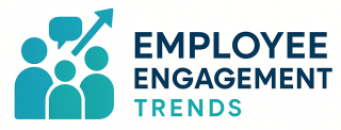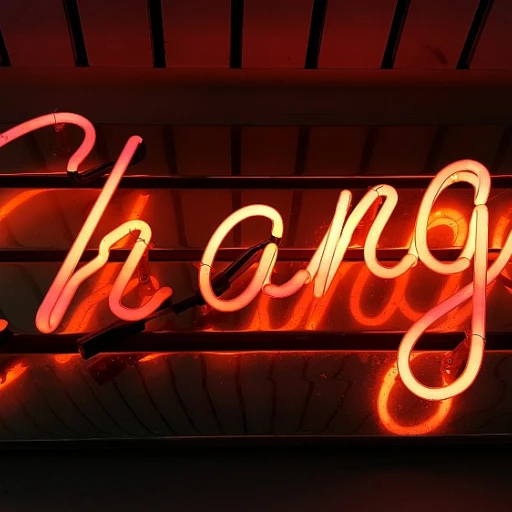Building the Foundation for Team Engagement
The initial phase of group development, known as "forming," sets the stage for developing team dynamics that foster employee engagement. During this crucial period, team members come together, often for the first time, to assess the project at hand and establish a basic understanding of their roles within the group. As the team begins navigating this early stage, it is vital for the leader to set clear expectations, outline the group’s purpose, and aid members in understanding the common goals.
In these formative moments, team leaders play an essential role by guiding discussions and ensuring every group member feels heard. This involvement helps lay a strong foundation for future stages such as storming and norming, where trust and communication patterns begin to take shape. By opening lines of communication early, teams are better equipped to handle potential conflict in the storming stage and promote effective team dynamics, which is critical for sustaining group engagement over time.
Effective project management during the forming stage allows teams to set clear objectives and timelines, facilitating the transition to the storming and norming stages. It is here that the groundwork is laid for members to align with the team's purpose and feel motivated.
Efforts to establish this groundwork early on can positively influence the group's success in subsequent stages.
For those interested in promoting team cohesion and motivation from this early phase, consider exploring
inspirational approaches to boost team spirit and engagement, as these can significantly enhance the forming stage of team development. Embracing motivational strategies helps embed a culture of support and enthusiasm, which can be crucial in inspiring the group towards high productivity in the performing stage.
Storming: Navigating Conflict and Building Trust
Addressing Challenges for Successful Team Dynamics
Navigating the storming stage in team development can be a crucial period where potential conflicts and tensions emerge. During this stage, team members begin to voice their opinions openly, leading to disagreements and, at times, power struggles. This is expected as group dynamics shift from the forming stage where relationships are new and harmonious.
To ensure successful team development, leaders must adeptly manage these conflicts, encouraging open communication and collaboration among team members. Key strategies include:
- Encourage Open Dialogue: By promoting an environment where group members feel comfortable expressing their ideas and concerns, leaders can help facilitate constructive conversations. Open dialogue can lead to better understanding and alignment among team members.
- Build Trust: Trust is foundational in overcoming the storming stage. Providing team-building activities and clear communication can foster trust within the group, allowing them to work cohesively toward common goals.
- Clarify Roles and Objectives: By clearly defining each member's role and the project's objectives, leaders can minimize disputes and confusion, which often arise from unclear expectations. This clarity can enhance the group development process.
Effective leadership during this stage is critical to transition into the more harmonious norming stage, where stronger teamwork and deeper collaboration occur. Understanding the dynamics of Tuckman's stages, particularly during the storming phase, can significantly enhance strategies for better
employee engagement and high-performing teams. As these challenges are addressed, teams can move forward more efficiently, ready for the next phase of collaboration and achievement.
Norming: Establishing Effective Team Dynamics
Strengthening Team Dynamics through Collaborative Norms
In the norming stage, team dynamics begin to coalesce, leading to a more cohesive group development. Here, members start appreciating their roles and responsibilities, contributing to a more harmonious and synergistic work environment. This phase, crucial for enhancing employee engagement, establishes a sense of belonging among team members.
During norming, group members come to terms with their differences, fostering a culture where diversity is valued and respected. Such diversity is not solely in terms of personal backgrounds but also in ideas and approaches to project management. Encouraging open communication helps in solidifying trust and understanding, which are the bedrocks for collaboration and innovation.
Team members find it easier to express themselves without fear of retribution, allowing for more effective conflict resolution, a process initiated earlier in the storming stage. As the team learns to collaborate and assign tasks efficiently, the group is positioned to transition smoothly into the performing stage, where high levels of employee engagement can be achieved.
To facilitate the norming process, team leaders play a vital role. They should encourage transparency, provide feedback, and promote a supportive atmosphere. By nurturing these norms, leaders not only drive the current project towards success but also lay the groundwork for future endeavors.
Investing in this stage of team development results in well-functioning teams that require less oversight, ultimately achieving a balance between autonomous functioning and aligned efforts towards common goals. For further insights into avoiding common pitfalls in employee engagement, you can explore in-depth resources
here. This ensures that the practices adopted continue to keep employee morale and productivity at optimal levels.
Achieving Excellence Through Unified Efforts
The performing stage of group development is where team dynamics are truly optimized, and the synergy among group members reaches its peak. This phase represents the culmination of the groundwork laid during the forming, storming, and norming phases, and is characterized by high levels of collaboration and productivity.
During this stage, team members feel more confident and empowered, having navigated through the challenges of previous stages. Having built trust in the leader and among the group, members can now focus fully on project execution. By utilizing effective project management strategies, teams are better equipped to tackle complex tasks and meet their objectives.
Managers and leaders play a pivotal role in fostering an environment where the team can thrive. Their role evolves from directive to supportive as they encourage autonomy within the team. This shift allows members to leverage their skills, launching them into a self-sustaining mode of operation. It is during this phase that leaders observe the fruition of earlier development efforts and gauge team performance.
The synchronization of efforts in this stage often results in extraordinary levels of employee engagement. The sense of achievement that accompanies overcoming previous barriers, particularly those encountered during the storming and norming stages, solidifies the commitment of team members.
However, it is vital for organizations to remember that even during high-performing stages, continual assessment and support remain crucial. Ensuring that teams have the resources and encouragement to maintain their trajectory can further enhance engagement and sustain long-term success.
Adjourning: Reflecting on Achievements and Lessons Learned
Reflecting on Achievements and Lessons Learned
As teams progress through the various stages of group development, reaching the concluding phase can be both sentimental and an opportunity for valuable growth. The adjourning phase is a time when team members can reflect on their journey, celebrating achievements while acknowledging the challenges faced along the way. This is a crucial stage where members feel a sense of closure and accomplishment from their work together.
Encouraging reflection is integral to this stage. Leaders can facilitate discussions where the team shares what they learned from the project. This can include insights into their personal development as well as improvements in team dynamics since forming. It’s an opportunity to recognize individual and group contributions, which reinforces a culture of appreciation and recognition within the organization.
Discussing lessons learned during the adjourning stage is not only beneficial for the current project but also invaluable for ongoing and future team development. It aids in identifying what strategies worked well and what areas need enhancement. This reflection process can, in turn, be applied to improve the team's effectiveness in subsequent forming and storming stages.
Incorporating structured meetings or debrief sessions as part of the project management process at this stage can facilitate further learning opportunities. By creating an open space for communication, members can share feedback constructively, fostering trust and collaboration for future team endeavors. The knowledge gained here lays a foundation for stronger, more resilient teams ready to engage at high levels in new projects.
Linking Group Development to Employee Engagement Strategies
Integrating Employee Engagement Strategies Throughout Group Development
Understanding the stages of group development is crucial for aligning employee engagement strategies that match each phase of a team's evolution. Applying well-suited engagement methods can dramatically enhance the growth and effectiveness of any team or project. Here are strategies to consider:
- Initial Engagement in the Forming Stage: During the forming stage, leaders should focus on establishing clear communication and setting expectations. It's beneficial to provide team members with an overview of the goals and responsibilities to foster an environment of openness and inclusion. This helps lay a solid foundation for future engagement activities.
- Boosting Trust in the Storming Phase: When teams face the turbulence of the storming phase, it's essential to mitigate conflicts by encouraging transparent communication and empathy. Team leaders can promote activities that emphasize collaborative problem-solving, which strengthens trust among team members and aids in conflict resolution.
- Reinforcing Group Dynamics in the Norming Stage: As teams move into the norming phase, fostering a culture of constructive feedback and recognition becomes key. Encourage peer-to-peer acknowledgement and support to build a sense of camaraderie and solidarity. Celebrating milestones, even small ones, can reinforce positive group dynamics.
- Maximizing Engagement in the Performing Stage: When a team reaches the performing stage, they are capable of achieving high productivity and engagement. Here, leaders should continue to empower team members by providing autonomy and supporting innovation. Regular engagement surveys and feedback sessions can ensure that the team's energy remains aligned with the organization's goals.
- Reflecting and Planning Post-Adjourning: After completing a project or as teams adjourn, it's crucial to reflect on accomplishments and lessons learned. Encourage team members to share insights and feedback openly, which can be used to enhance future projects or group initiatives. This reflective practice ensures continuous improvement and sustained engagement.
By considering these strategies, leaders can effectively nurture their team's development at each stage, ensuring sustained employee engagement and productivity as groups progress through their lifecycle. This strategic alignment not only optimizes team performance but also contributes to the overall success and satisfaction of its members.














